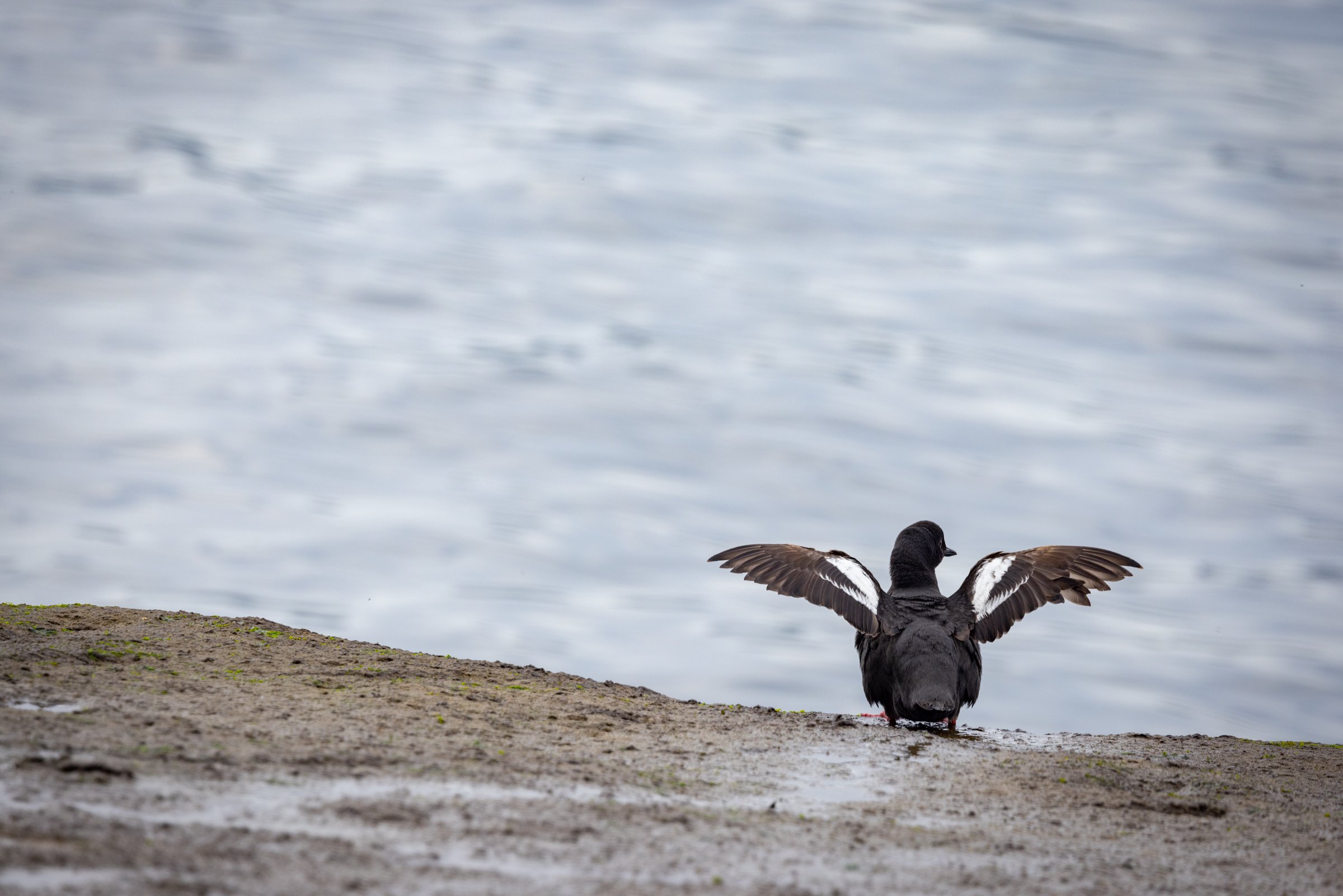Critter of the Month: Pigeon Guillemot
On the shore of Tacoma Washington’s Commencement Bay sits a regional treasure, the 760 acre Point Defiance Park. Home to forest, gardens, and miles of beach, the park hosts 3 million visitors a year who come to boat, fish, picnic, enjoy the trails, and relax with friends and family. This bustling green space is also home to wildlife from orcas to seals to songbirds, serving as an urban oasis for people and animals alike.
Pigeon guillemots form monogamous pair bonds, cemented through courtship rituals of bill touching, shrill vocalizations, and bouts of chasing.
After much calling and bill touching, it’s time to breed!
With all the human activity in the park and its adjoining waters, it seems improbable that it would also serve as a nest site and nursery for seabirds – usually very sensitive to disturbance - but I recently discovered that a (mostly) hidden part of the park offers just the right seclusion for a pair of pigeon guillemots (Cepphus columba) with breeding on their mind. During infrequent minus tide events, it’s possible to walk all the way around Point Defiance for a few hours and I did just that a few weeks ago and found this pair courting, copulating, and setting up housekeeping in their cliffside burrow.
Guillemots, like other seabirds, suffer from declines of their small fish prey due to warming ocean and over-fishing. Fortunately, these birds also feed on other marine life such as worms, shrimp, and snails so their populations are relatively secure for now.
Pigeon guillemots in their nesting burrow where they will incubate their eggs for about a month. When chicks fledge about six weeks after hatching, they leap from the burrow into the water, usually after dark. It will be another two weeks until they can fly.
Pigeon guillemots are not currently considered at risk,
but according to the National Audubon Society, there are 300 million fewer seabirds now than in 1950 – a decline of 70%. Seabirds are very sensitive to warming waters that are changing the behavior of forage fish, making them less accessible to near shore predators like guillemots. Seabirds are also threatened by ocean trash, oil spills, and other pollution.
A pigeon guillemot flies to its burrow in Point Defiance Park, Tacoma, Washington. Both parents will care for the chicks, feeding them nearly non-stop as they grow.
Pigeon guillemot nesting burrows in sandstone cliffs on the shore of Point Defiance Park, Tacoma, Washington. These seabirds select hard-to-reach burrows to protect chicks from predation.
Pigeon Guillemot Likes: Feasting on yummy marine worms, shrimp and small fish. Guillemots “fly” underwater beating their powerful wings to dive below the waves.
Pigeon Guillemot Dislikes: Marine plastics and other trash that they can mistake for food to eat or feed their chicks. Lost and abandoned fishing gear can also entangle guillemots and other swimming and diving seabirds.
Pigeon Guillemot Super Power: Adapting to life in a bustling urban environment!
The Port of Tacoma sees a high volume of ship traffic serving trade along both sides of the Pacific Ocean. The threat of oil spills in Puget Sound posed by intense shipping activity is an ever present concern to seabirds and other wildlife.
These birds have proven adaptable to life within a bustling urban environment but face ongoing challenges of warming oceans and marine pollution.











